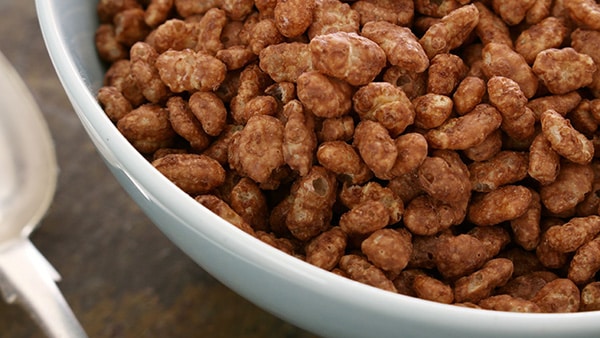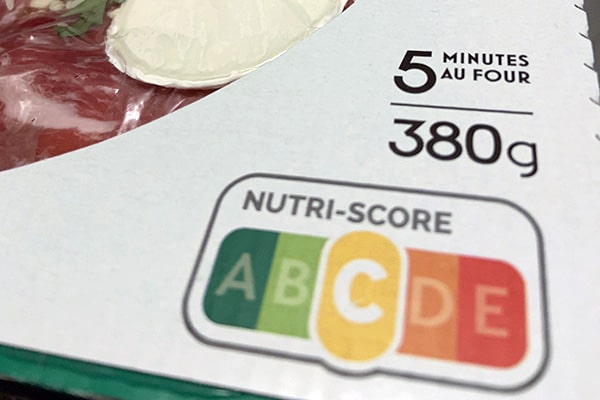You've probably already spotted it while shopping at the supermarket. The Nutri-score is a recognizable logo whose purpose is to classify products according to their nutritional quality. More and more used in France, this indicator is however widely controversial. In this article, we will analyze together the advantages and disadvantages of the Nutri-score. We will also see how it can be used by bodybuilders who want to improve their diet to reach their goals.
What is the Nutri-score?
A public health indicator
The Nutriscore was created in November 2017 by Serge Hercberg, a French nutritionist. Convinced that diet is essential to stay in good healthHe has devised a food evaluation system that is accessible to all.
The latter was then developed by a team of international researchers, and launched at the initiative of the French government.
The main objective of the Nutri-score is to help consumers choose better quality food products to improve their health. Indeed, feast reduces the risk of pathologies such as diabetes, obesity, cancer or cardiovascular diseases.
To do this, it compares foods from the same family according to a simple and intuitive classificationIt can be understood in a fraction of a second.
It is a true indicator of public health which is aimed at the greatest number of people. It therefore completes the information that manufacturers are obliged to display on food labels, according to the prerogatives of the INCO regulation entered into force in 2014:
- Food List;
- Allergens;
- Country of origin;
- Energy value in calories;
- Or the amount of carbohydrates, proteins and fats.
Information that many French people unfortunately do not know how to decipher.
The Nutri-score logo has been placed on the packaging of many everyday products, on a voluntary basis by food companies. This is notably the case for brands such as Carrefour, Leclerc, Intermarché, Auchan, Lustucru, Harrys, Charal, Panzani, Danone, Fleury Michon, Lay's, Nestlé or Kellogg's.
It classifies the products on a A to E scale. For ease of identification, each letter is associated with a color. Green represents the foods considered the healthiest, while red designates those whose nutritional quality is less balanced.
How is the Nutri-score calculated?
For 100 g or 100 ml of a food, this indicator makes the difference between positive elements (the content of vitamins, legumes, fiber or protein) and negative elements (the content of sugars, saturated fatty acids or salt). This makes it possible to assign a grade to each product, materialized by a letter and a color.
But the mode of calculation of the Nutri-score may be different for different types of products. Due to their composition, foods such as oils, cheeses or beverages have their own rating system.
The limits of the Nutri-Score
It does not take into account the degree of transformation
This is certainly the main limit of the Nutri-score.
Nutrition is a complex discipline, where many factors must be taken into consideration.
In its desire to make information accessible to all, the Nutri-score simply analyzes the nutritional qualities. It does not take into account essential factors such as degree of transformation products or the presence of additives. Two elements that we know today can have harmful consequences on health.
Some ultra-processed foods get A or B grades. This is, for example, the case for Chocapic brand cereals, Coca-Cola soda without sugar or certain industrial dishes, whose benefits are questionable.

However, for bodybuilders, eat healthy is a key factor for success. 70 % of your results are the direct consequence of your diet, with a caloric intake adapted to your needs, a good distribution of your macronutrients and quality foods. Nutritionists advise eating a minimum of 80 % of healthy foods for every 20 % of processed foods.
It is not always well understood by consumers
Many detractors of the Nutri-score blame it for favoring industrial food, to the detriment of natural and local products. This argument is generally illustrated by the example of Diet Coke or processed cereals, which get a better score than a PDO-labeled Camembert or a can of sardines in oil.
This argument perfectly reflects the lack of understanding of this tool. Its purpose is to allow easy comparison of substitutable products of the same family. In other words, it is used to compare cheeses with each other, or drinks with each other. But not cheeses with drinks.
Similarly, many foods classified as D or E can be incorporated into a healthy lifestyle. Some are even necessary, such as oils. Oils have long been misclassified because the calculation is based on a 100 ml quantity which does not reflect normal consumption.
This is why we must not stop at the Nutri-score score. It is one indicator, among others, to choose what you put on your plate.
However, despite its limitations, is the Nutri-score of no interest? As imperfect as it may be, we will see that it remains a reliable and interesting tool to help the average consumer to eat better.
The strengths of this indicator
It is intended for the general public
The Nutri-score is an easy to understand food labelling system. It offers the general public a first level of quick and relevant information.
Again, this is a public health tool, and that is how it should be viewed. We, as bodybuilders, are generally used to reading food labels. This is essential, because we know how to differentiate healthy products from ultra-processed products. Just as we know how to identify protein, carbohydrate and fat intakes.
But what about the general population? For the average person, deciphering product packaging is an impossible task.
Two studies (one conducted by a group of European researchersthe other by Spanish academics) have been interested in the subject. Their conclusions are clear: a high consumption of foods with a low nutritional value, according to the Nutri-score classification, is associated with a higher mortality risk.
It progresses
The Nutriscore is a relatively recent tool. Its calculation method is regularly reviewed, which allows it to be more efficient.
Here are several examples that show the Nutri-score is improving over time:
- Given the latest scientific findings on the effects of red meat for health, it will be less well rated than white meat or fish;
- Some ultra-processed ready meals, previously classified as A or B, will be downgraded to categories B, C or D (this is the case for some pizzas);
- The classification of good oils will be reviewed, as all were classified in categories C, D or E (this will also be the case for cheeses);
- Some high-sugar breakfast cereals with the highest scores will also be ranked much lower;
- The rating of products based on whole grains will be better than those made from refined grains.
These developments are also pushing some manufacturers to review the composition of their products to obtain better grades, which can only be positive for the population as a whole.

DISCOVER MY E-BOOK OF RECIPES
To conclude
So, is the Nutri-score reliable? Yes, even if it can be improved! It is an indicator of confidence to eat healthy. But it is not the only element to remember when choosing your products at the supermarket. Just because a product is rated D or E does not mean you should not eat it, and vice versa. It's all a question of proportion. The Nutri-score does not replace the knowledge of your food choices. nutrient requirementsbut provides welcome help to millions of consumers. And if you want to eat better for lose weight, discover the personalized diet follow-up of 12 weeks with menus adapted to your tastes and needs.







